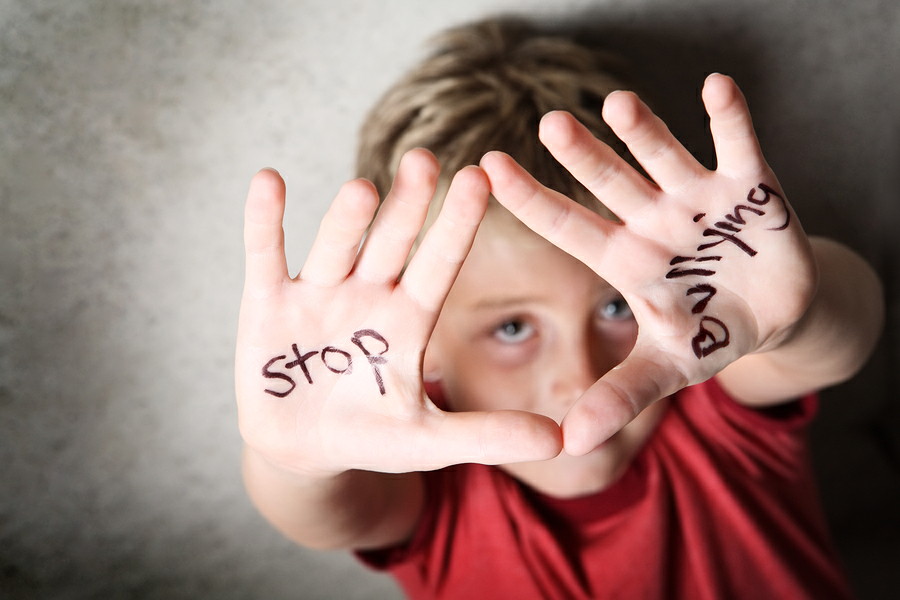
Bullying in the US and Canadian School Systems: The Legal Standard
Bullying Legal Standards
Over the last several years, U.S. states have enacted laws that require public schools to develop policies and procedures to stop bullying. New Jersey may have the toughest anti-bullying law in the nation, requiring schools to include in their policies that a teacher can be disciplined for not reporting bullying. Like other states, New Jersey requires that administrators report to the board of education and to the state department of education the extent and type of bullying that occurs in their schools and to certify they have specific programs in place to educate students about bullying.
In Canada, each province has passed laws that, in varying degrees, address bullying in public and Catholic schools. Perhaps the best example of protective legislation is Ontario’s Accepting Schools Act, passed in 2012, which was developed in response to several suicides of bullied students. The act defines bullying behavior as including psychological, social or academic harm and harm to an individual’s reputation.
On Sept. 13, 2013, Manitoba passed the Public Schools Amendment Act (Safe and Inclusive Schools), which requires public and private religious schools to create a “respect for human diversity policy” that protects student organizations wanting to create clubs that promote antiracism, respect for people with disabilities, or awareness and understanding of people of various sexual orientations. The new law builds on Manitoba’s 2004 Safe Schools Charter, which says that bullying or abusing someone physically, sexually or psychologically — verbally, in writing, or otherwise — is unacceptable and requires that all schools develop codes of conduct and emergency response plans, and review them regularly.
To understand the law as it pertains to bullying in the United States, let’s look at two important U.S. Supreme court cases.
In Gebser v. Lago Vista Independent School District (1988), the Supreme Court ruled that bullying, in some instances, constitutes sexual harassment. The original case, over an off-campus incident, involved a perpetrator who was a school employee and an underage student victim. The girl brought suit against the school district, but failure to produce reliable proof that the school knew about the incident resulted in a lower court ruling in favor of the school. The fact that someone in a position of authority over the young person constituted harassment, the Supreme Court ruled, but because the school did not know about the bullying or harassment, it could not be held liable. Had it known and done nothing to stop the abuse, the school could have been sued, with particular defendants named in the case.
This ruling should send a clear message to schools that, in some cases, bullying is legal harassment, and that suits can be brought forward and won on a preponderance of the evidence if it is shown the school or school officials were negligent in bullying cases — even in off-campus incidents.
In Davis v. Monroe County Board of Education (1999), the Supreme Court determined a school board was liable for student-on-student harassment when the school acts with “deliberate indifference” toward the bullying act. This court essentially concluded that the harassment in this case was so severe, it prevented the student’s access to an equal opportunity in education or benefits. While this decision provided some legal framework for a school board’s liability, the court reminded schools that this framework did not exonerate them from the responsibility of doing the right thing.
These two cases teach us that bullying constitutes harassment when schools either know about the bullying and do nothing to stop it, or allow an incident of bullying to get so severe that it gets in the way of a student’s right to a free public education and opportunity. In layman’s terms, negligence is knowing what to do to prevent a problem but choosing not to act. Adults, in their standing in the school, have a responsibility and an obligation to kids, parents, and the community to stop any type of harassment or bullying whenever they see it.
The underlying theme is that administrators and teachers are responsible for what happens in their schools and that they have a moral, ethical, and legal responsibility to do something about bullying whenever it occurs. The bottom line is: When an incident of bullying is brought to their attention, do they sweep it under the rug or do they deal with it and punish the offenders? How well they can honestly answer this question will determine whether their argument will stand up in court or not.
What is Bullying?
There are standards that an event must meet to constitute bullying that can result in legal action. This is the general rule or “harassment test” that determines whether a student or another person is guilty of harassment. The bullied student must be identified in a specific group, identified by gender, race, or disability, and the harassment must be based on discrimination law regarding the specific group. The harassment must be so severe that it hinders the student from carrying on in a manner that would allow him or her to continue their education or engage in certain pursuits without the fear of being harassed. In a bullying case, it must be shown that a school official had knowledge of the harassment, did nothing to end it, and did not implement its student code of conduct to discipline the perpetrator or remove them from the victim — thereby allowing the harassment to continue.
There is no legal definition of bullying. In the school context, bullying can be a severe single occurrence intended to hurt someone physically or emotionally. More often, bullying is a series of events that, over time, creates an ongoing pattern of harassment. If bullying cannot be controlled in school — if we can’t stop the bully — then, typically, civil charges can be filed against the bully. These charges are harassment or harassing communications, which are misdemeanor cases.
In the United States, laws and terminology differ from state to state, but if a child has been threatened, the bully may be charged with “threatening behavior.” If a child has been sexually assaulted, the bully may face an “indecent assault” offense. If a child has been physically assaulted, then the bully may be charged with “criminal offense of assault.”
In Arizona’s Protection from Harassment Act, two criminal offenses could be applicable to bullying: harassment and the offense of putting people in fear of violent acts. In this circumstance, prosecution cannot proceed unless the harassment has occurred more than once.
While there is no offense termed bullying under the Canadian Criminal Code, many behaviors or incidents characterized as bullying fit the definition of criminal offenses. These include, for example, criminal harassment (CCC 264), uttering threats (CCC 264.1), assault (CCC 265 & 266), and sexual assault (CCC 271). Perpetrators may face juvenile or adult sentencing, depending on the circumstances of a crime.
In numerous situations, students have been charged for their role in bullying, but the lack of a legal definition of bullying defines a key difficulty in criminalizing bullying: What standard should be used? Does the state or province base the charges on the nature of the bullying itself — or on the response of the victim? In other words, are charges brought, for instance, under a criminal stalking law against when student who follows and relentlessly harasses another? Or is the student charged with criminal harassment only when the bullied student becomes sufficiently fearful for her life?
Are Antibullying Programs Working?
School should be a place where children feel safe and secure — a place where they can count on being treated with respect. Even with new canned programs and tolerance efforts by schools, however, the unfortunate reality is that many students are still targets of bullying. School personnel continue to minimize or underestimate the extent of bullying and its academic, physical, and emotional consequences. As a jury in Indiana concluded this week, bullying is often tolerated or ignored. In this case, a 15-year-old girl arrived at school one morning to find pictures posted around the school that had been edited to show her in a sexually suggestive manner. The girl’s family claimed that the school district was negligent in how it handled the incident and failed to offer proper counseling to the girl as she struggled to recover from the incident.
Ask junior high school students if they have witnessed bullying or have been victims of a bully over the past several weeks, and you will find not only that bullying is still occurring but also that it has been taken to the cyber playground — where it is more difficult to observe and control.
Antibullying programs that are now common in schools may be having the opposite of their intended effect, according to new research from the University of Texas–Arlington. In a study published in the Journal of Criminology, researchers found that students at schools with anti-bullying initiatives are actually more likely to be victims of bullying than students who attend schools without such programs. This raises the question as to whether bullying behavior has changed in schools. The authors speculate that while bullies may have learned a variety of antibullying techniques, their dominant social status may compel them to ignore the problem-solving skills they have learned through antibullying programs. Thus, they suggest, prevention strategies may be more effective if they are developed around the bully-victim dynamic.
To be sure, antibullying programs have increased awareness of the problem. Increases in both the incidence of the reporting of bullying and media accounts of bullying-related litigation suggest that we as a society have taken note of the harmful effects of bullying. And this is a good thing. From awareness comes action — hopefully, that changes the cultural landscape of our schools so that all students feel welcome and safe no matter their sexual orientation, disability, national origin, or other things that might cause a bully to prey on another. A welcoming community that accepts diversity and teaches empathy is, in my opinion, what is necessary in our schools if we are to protect children from the harm of bullying.
Who is the bully?
Today’s bully isn’t just the schoolyard punk who shoves other kids around. It’s the seventh-grade girl who tells lies about a classmate to keep her out of the “girl group.” It’s the handsome student council president who pushes a wheelchair-bound child into a wall. It’s the 10th grader who says something on Facebook about someone that she wouldn’t have the guts to say to her face. It’s the aide on a school bus who sexually molests a 4-year-old while sitting next to him. It’s the teacher whose punishment of a student doesn’t fit the “crime.” Bullies can be athletic, academically smart, attractive, and cunning. School administrators don’t see them in the crowd. They blend in and work under the radar. They bully when no one is looking and they intimidate their victims, who are too afraid to tell.
Bullying a Public Health Issue
Bullying in school is a significant public health problem. Physical aggression has been linked to an increase in injuries, violent crime, school adjustment problems, substance use, and mental health problems among kids. The 1998 U.S. Health Behavior in School-aged Children survey first identified bullying and victimization as significant problems, noting that victims are more likely than kids who have never been bullied to perpetuate the cycle because they often perceive violence as a solution to their problems. This prompted an increase in school-based bully-prevention efforts.
The recent suicides in Canada of Amanda Todd in British Columbia and Rehtaeh Parsons in Nova Scotia underscore the point that, unfortunately, teens will take desperate measures when bullied, harassed, and humiliated by peers. While there is a strong association between bullying and suicide, other public health influences, such as depression and delinquency, contribute to suicide-related behaviors. This understanding led mental health experts writing in the Canadian Medical Association Journal to call for school-wide interventions after a student suicide rather than focusing prevention efforts on the close friends of the suicide victim. The journal’s editors concluded that bullying among youth is a significant public health problem and that public health strategies can be applied to prevent both bullying and suicide.
Where do we go from here?
The school bully has been around forever. The stereotypical bully — the schoolyard tough guy who is quick to fight, intimidate, and threaten for his own gain or to look good in front of other kids — has become so much a part of the school environment that, in some situations, school administrators consider this intrusion into the school culture as the norm. This response is unfortunate in light of today’s understanding about the scope of bullying and the psychological damage it inflicts — up to the point of suicide.
There are lots of programs — some effective and some not so effective — that attempt to change mean kids into kind helpers. But these, in my opinion, don’t change the core of an individual who just doesn’t have empathy for another. Laws and school policies, training and punishment for bullying and lawsuits might cause students and school districts to sit up and take notice. We need these elements if we are to continue moving in the direction of creating schools where kids feel safe and can learn without looking over their shoulders for bullies.


